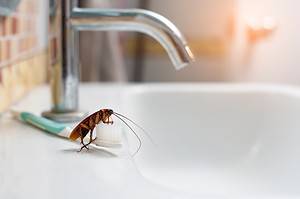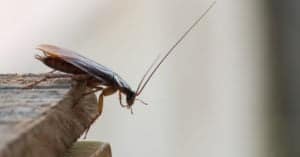Cockroaches are among the most resilient and adaptable insects on Earth, with over 4,600 species existing worldwide.
They play a vital role in the ecosystem as decomposers, breaking down organic matter and helping recycle nutrients back into the soil.
But in urban and residential areas, cockroaches are pests due to their potential to spread disease, trigger allergies, and damage property.
Several cockroach species can be found in Georgia, each with unique habits and habitats. As a result, residents must be aware of the cockroach season and the different types found in the region.
In this article, we provide a comprehensive understanding of the cockroach season in Georgia and offer practical tips for prevention and control.
Types of Cockroaches in Georgia
Georgia is home to various cockroach species, each with distinct appearances, habitats, and behaviors. Recognizing these species can help residents identify infestations and determine appropriate control measures.
#1: The American Cockroach (Periplaneta americana)

Measuring between an inch and a half and two inches long, American cockroaches are among the largest in Georgia.
©iStock.com/ViniSouza128
The American cockroach, known scientifically as Periplaneta americana, is among the largest species in Georgia, measuring up to 1.5-2 inches long.
They have a reddish-brown color with a distinct yellow margin behind the head.
These cockroaches prefer damp, dark environments such as basements, sewers, and crawl spaces. But can also be found in kitchens and bathrooms.
#2: The German Cockroach (Blattella germanica)

Not even reaching an inch in length, German cockroaches are much smaller than American cockroaches.
©7th Son Studio/Shutterstock.com
German cockroaches (scientific name: Blattella germanica) are smaller, measuring 0.5-0.6 inches long.
They have a light brown color and two dark parallel lines behind the head.
This species is notorious for infesting residential buildings, especially kitchens, and bathrooms, where they have access to food and water sources.
#3: The Oriental Cockroach (Blatta orientalis)
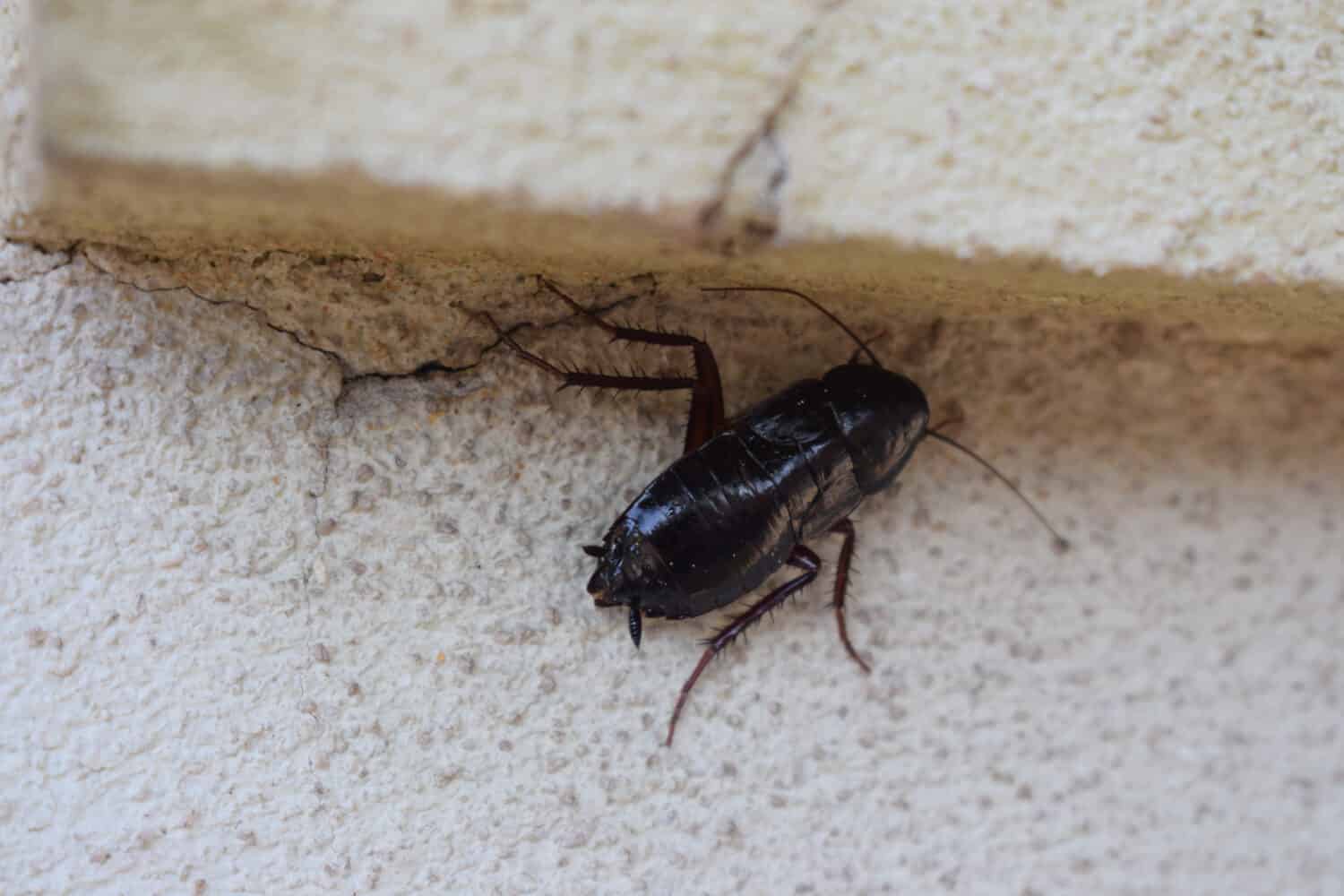
Water bug is another name for oriental cockroaches.
©Furiarossa/Shutterstock.com
Also known by their scientific name Blatta orientalis, oriental cockroaches are dark brown to black and measure 1-1.25 inches long.
They’re commonly called “water bugs” because they prefer damp environments such as sewers, drains, and basements. In addition, they’re known for their strong, unpleasant odor.
#4: The Smokybrown Cockroach (Periplaneta fuliginosa)

The dark brown to mahogany color distinguishes smokybrown cockroaches.
©eye-blink/Shutterstock.com
Also known as Periplaneta fuliginosa, smokybrown cockroaches are slightly smaller than American cockroaches, measuring 1-1.5 inches long.
They have a uniform dark brown or mahogany color. This species is typically found outdoors in wooded areas and can be attracted to homes by decomposing organic matter, such as leaf litter and mulch.
#5: The Brown-Banded Cockroach (Supella longipalpa)
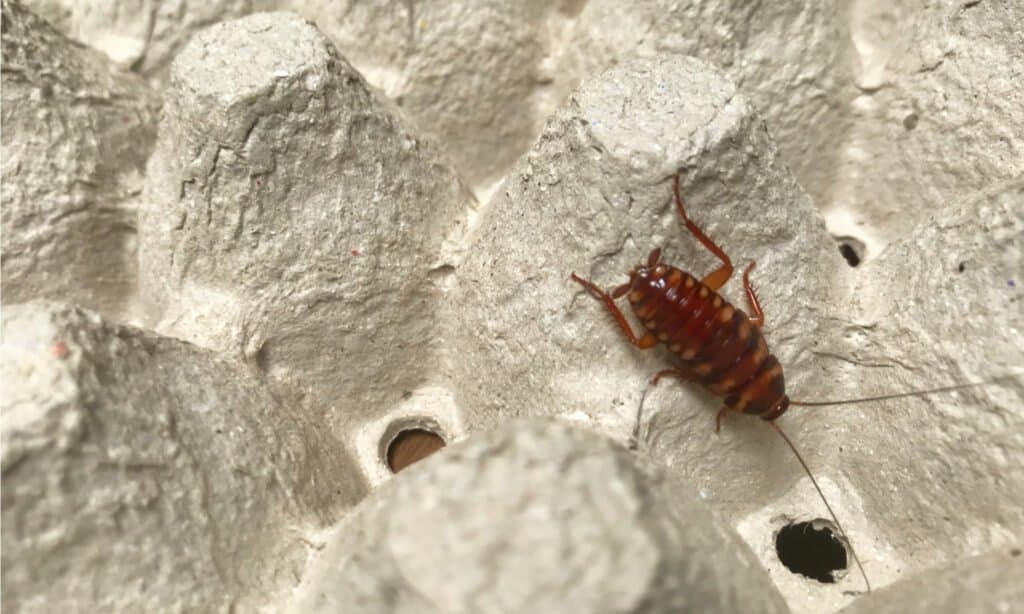
Brown-banded cockroaches get their name from the two light bands they have across their dark brownish bodies.
©Freedom my wing/Shutterstock.com
Also called Supella longipalpa, Brown-banded cockroaches are small, measuring about 0.5 inches long. They’re light brown with two distinctive dark brown bands across their wings.
Unlike other species, they prefer drier environments and can be found in furniture and cabinets, and behind appliances.
#6: The Asian Cockroach (Blattella asahinai)

Asian cockroaches are usually dark brown, reddish-brown, or shiny black in color with a glossy body.
©Brett Hondow/Shutterstock.com
Also known by their scientific name Blattella asahinai, Asian cockroaches are similar in appearance to German cockroaches, but they’re more attracted to outdoor environments with ample vegetation.
They are strong fliers commonly found in gardens, yards, and wooded areas.
#7: The Florida Woods Cockroach (Eurycotis floridana)
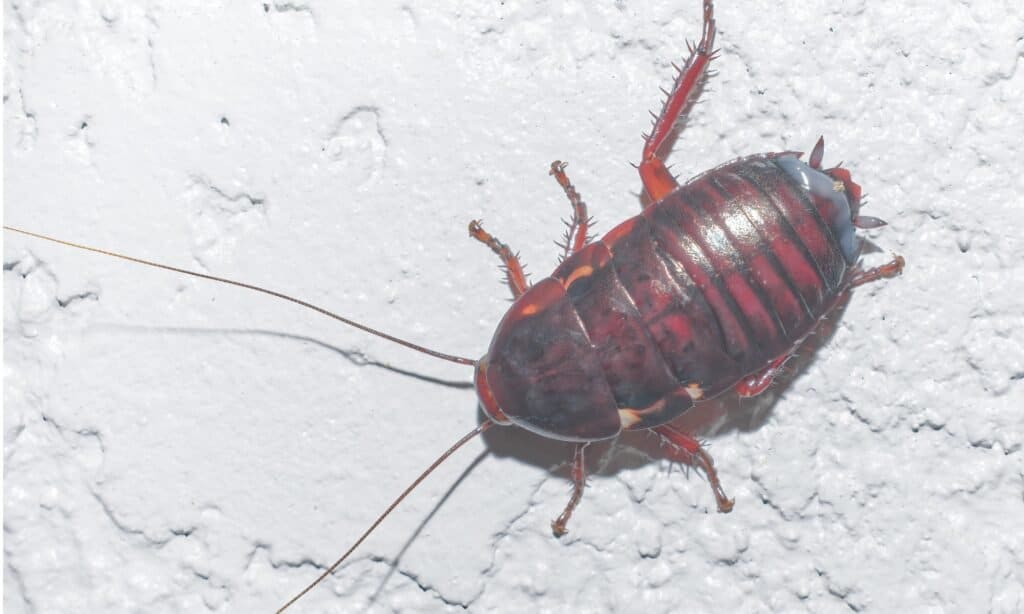
With a preference for damp, wooded environments, Florida woods cockroaches generally hide under decaying logs and leaf litter.
©iStock.com/Dan Rieck
Florida woods cockroaches, also known as “stinking cockroaches,” are large, measuring up to 1.2 inches long.
They’re dark brown to black and emit a foul-smelling defensive secretion when threatened.
They prefer damp, wooded environments and can be found under decaying logs and leaf litter.
#8: The Surinam Cockroach (Pycnoscelus surinamensis)
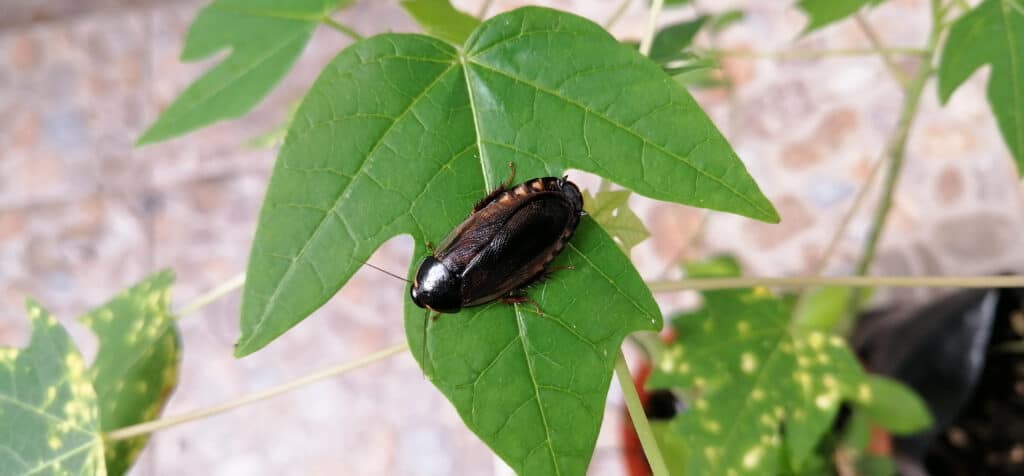
You might find Surinam cockroaches in your greenhouse or garden, given their proclivity for warm and moist environments.
©iStock.com/Luis Serrano
Surinam cockroaches are medium-sized, about 0.75-1 inch long, and have a shiny, dark brown to black color. They prefer warm, moist environments and are often found in greenhouses, gardens, and mulch piles.
This species is unique as it reproduces through parthenogenesis, meaning the females can reproduce without males.
#9: The Australian Cockroach (Periplaneta australasiae)
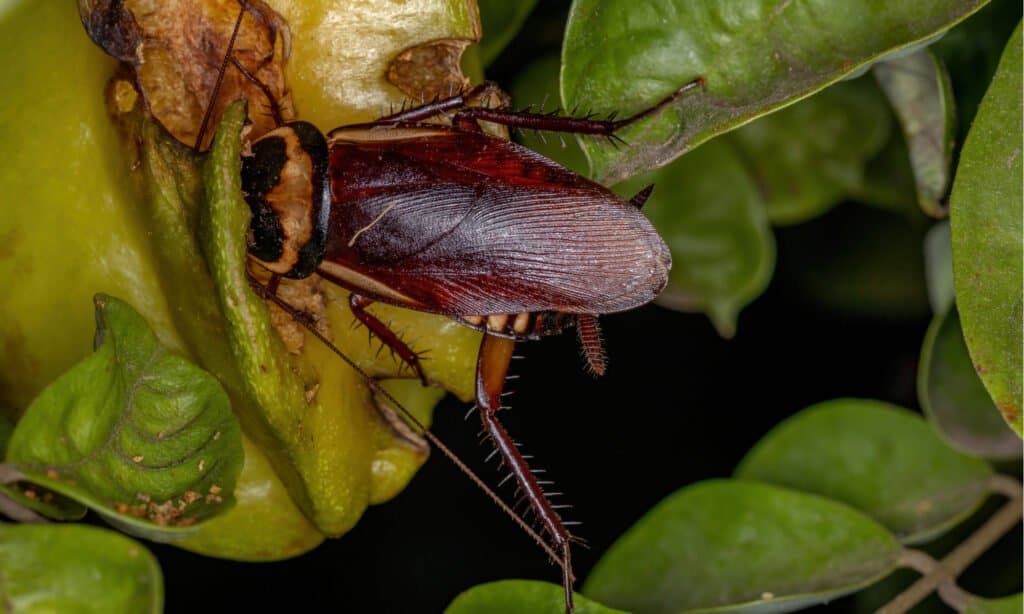
While similar to American cockroaches, Australian cockroaches are just a bit smaller.
©Vinicius R. Souza/Shutterstock.com
Known by their scientific name Periplaneta australasiae, Australian cockroaches are similar in appearance to the American cockroach but slightly smaller, measuring 1-1.25 inches long. They have a yellow margin on the thorax and yellow streaks on the sides of their wings. They’re typically found outdoors but can invade homes, especially for food and warmth.
#10: The Pennsylvania Wood Cockroach (Parcoblatta pensylvanica)
Also known by their scientific name Parcoblatta pensylvanica, Pennsylvania wood cockroaches are small to medium-sized, measuring 0.75-1 inch long. They have a dark brown color and prefer outdoor environments, such as wooded areas, where they feed on decaying organic matter.
They aren’t considered indoor pests but may occasionally enter homes through firewood or other materials brought inside.
The Cockroach Season in Georgia
Cockroach activity is influenced by environmental factors such as temperature and humidity, which fluctuate throughout the year. As a result, there is a distinct cockroach season during which infestations are more likely to occur.
The cockroach season in Georgia generally extends from late spring to early fall, with activity levels increasing as temperatures rise and humidity levels become more favorable for these pests.
The peak season for cockroach infestations typically occurs in late summer when environmental conditions are most suitable for their survival, reproduction, and growth.
Seasonal Patterns for Common Cockroach Species
The different cockroach species in Georgia may exhibit unique seasonal patterns of activity. Understanding these patterns can help residents identify potential infestations and implement appropriate prevention and control measures.
Seasonal Patterns by Species
- The American cockroach. This species is active year-round but tends to reach peak activity levels during the summer when temperatures and humidity are highest.
- The German Cockroach. Although German cockroaches can be found year-round in Georgia, infestations tend to be more noticeable during the summer, when they’re more active and reproduce more rapidly.
- The Oriental Cockroach. Oriental cockroaches are mainly active from late spring to early fall, preferring warmer temperatures and higher humidity levels.
- The Smokybrown Cockroach. Like Oriental cockroaches, smoky brown cockroaches are most active from late spring to early fall, when environmental conditions are most favorable.
- The Brown-Banded Cockroach. Brown-banded cockroaches can be found year-round but may experience increased activity during warmer months when indoor temperatures are higher, preferring drier conditions than other species.
- The Asian Cockroach. Asian cockroaches are most active during the warmer months, typically from late spring to early fall, when they can be found in gardens, yards, and wooded areas.
- The Florida Woods Cockroach. Florida woods cockroaches are more active during the warmer months of late spring to early fall, thriving in damp, wooded environments.
- The Surinam Cockroach. Surinam cockroaches are active year-round in Georgia but may be more noticeable during the warmer months when they’re more likely to be found in greenhouses, gardens, and mulch piles.
- The Australian Cockroach. Australian cockroaches are most active during the warmer months of late spring to early fall, when they can be found both outdoors and indoors for food and warmth.
- The Pennsylvania Wood Cockroach. Pennsylvania woods cockroaches are typically more active during the warmer months of late spring to early fall, mainly in outdoor wooded areas where they feed on decaying organic matter.
Factors That Influence Cockroach Activity
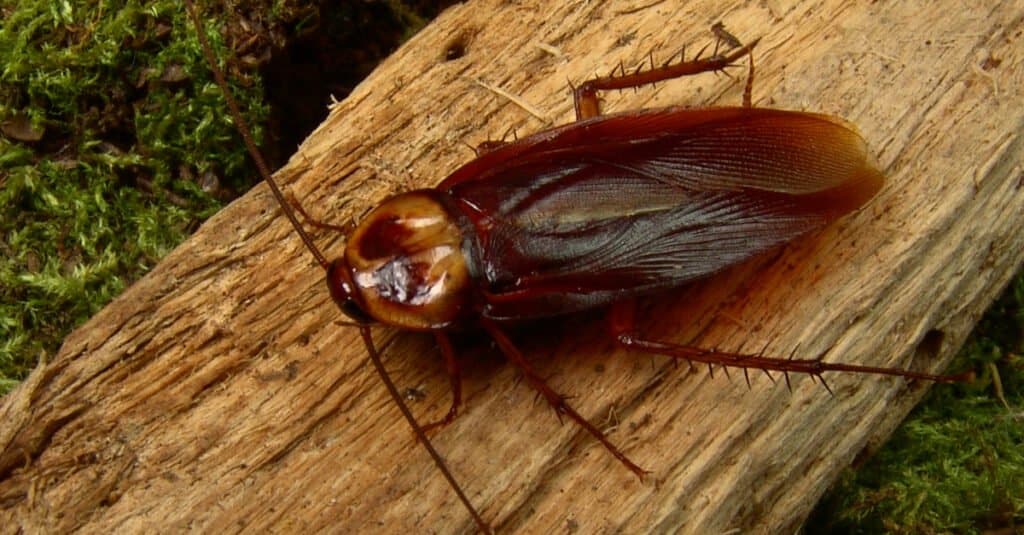
A number of factors will contribute to the presence of cockroaches, including temperature and humidity levels.
©skifbook/Shutterstock.com
Cockroach activity is influenced by various environmental factors, primarily temperature, and humidity. Therefore, understanding how these factors affect cockroach behavior can help residents prepare for and manage infestations during peak seasons.
Temperature
Temperature plays a crucial role in determining cockroach activity levels. The ideal temperature range for most cockroach species is 70-85°F. Within this range, cockroaches are more active, reproduce more quickly, and seek out food and water sources.
As temperatures drop below or rise above this range, cockroach activity slows down. During the colder months, some species may become less active or even dormant, leading to a decrease in sightings and infestations.
Humidity
Humidity is another critical factor that influences cockroach activity. Most cockroach species prefer high-humidity environments, as they aid in their survival and reproduction.
High humidity provides the necessary moisture for cockroach eggs to develop properly and can also affect the rate at which they reproduce.
In Georgia, the humid climate can contribute to increased cockroach activity, particularly during the warmer months when humidity levels are typically higher.
Breeding
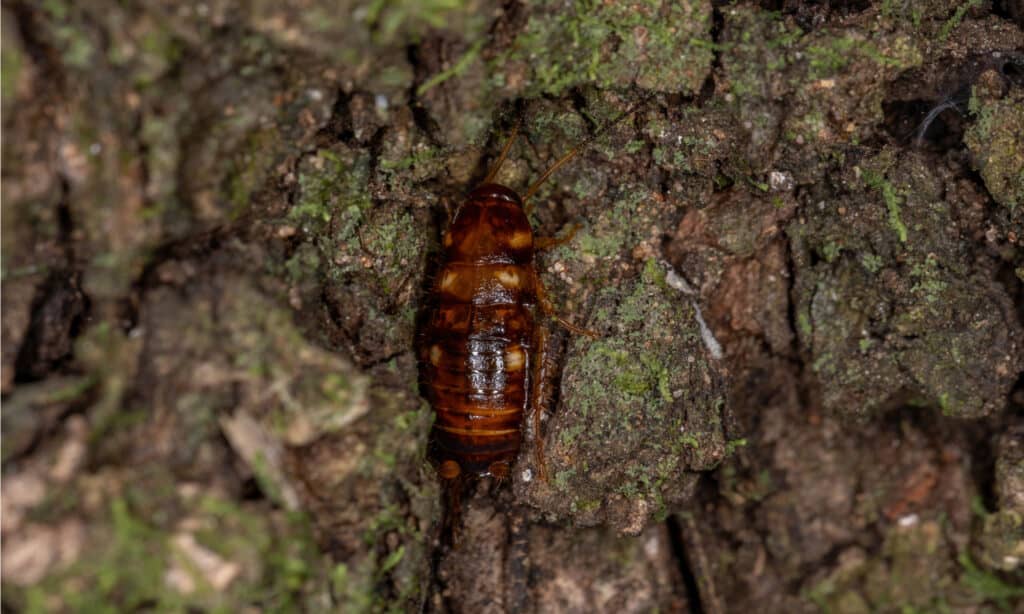
The environment plays a key role in cockroach breeding.
©Vinicius R. Souza/Shutterstock.com
Let’s gain insight into cockroach mating behavior, reproduction strategies, egg and nymph development, and factors influencing breeding can help improve prevention and control measures.
Mating Behavior
Cockroach mating behavior often involves courtship rituals and pheromone communication.
Males usually initiate courtship by extending their wings and releasing pheromones to attract females.
Upon finding a receptive female, the male will perform a series of behaviors, such as tapping or fluttering, to confirm her receptiveness before mating occurs.
Reproduction Strategies
Cockroaches exhibit different reproduction strategies, with some being oviparous and others ovoviviparous.
Oviparous species lay eggs within a protective case called an ootheca, which the female deposits in a safe location.
In contrast, ovoviviparous species retain the eggs within their bodies, giving birth to live nymphs once the eggs have hatched internally.
Egg Development
Cockroach egg development occurs within the ootheca, a protective case that houses multiple eggs.
The structure and appearance of the ootheca can vary among species, but it generally provides a secure environment for the developing embryos.
The incubation period for cockroach eggs can range from a few weeks to several months, depending on the species and environmental conditions.
Nymph Development
Once hatched, cockroach nymphs undergo several molting stages, or instars, as they become adults.
The number of instars and the duration of the nymph stage can vary among species and are influenced by factors such as temperature, humidity, and food availability.
Nymphs typically resemble adult cockroaches but are smaller and lack wings.
Factors Influencing Breeding
Environmental conditions and the availability of food and shelter play significant roles in influencing cockroach breeding.
Warmer temperatures and higher humidity levels can promote faster reproduction. Similarly, abundant food and suitable hiding places can support larger populations.
Adaptations to Their Environment
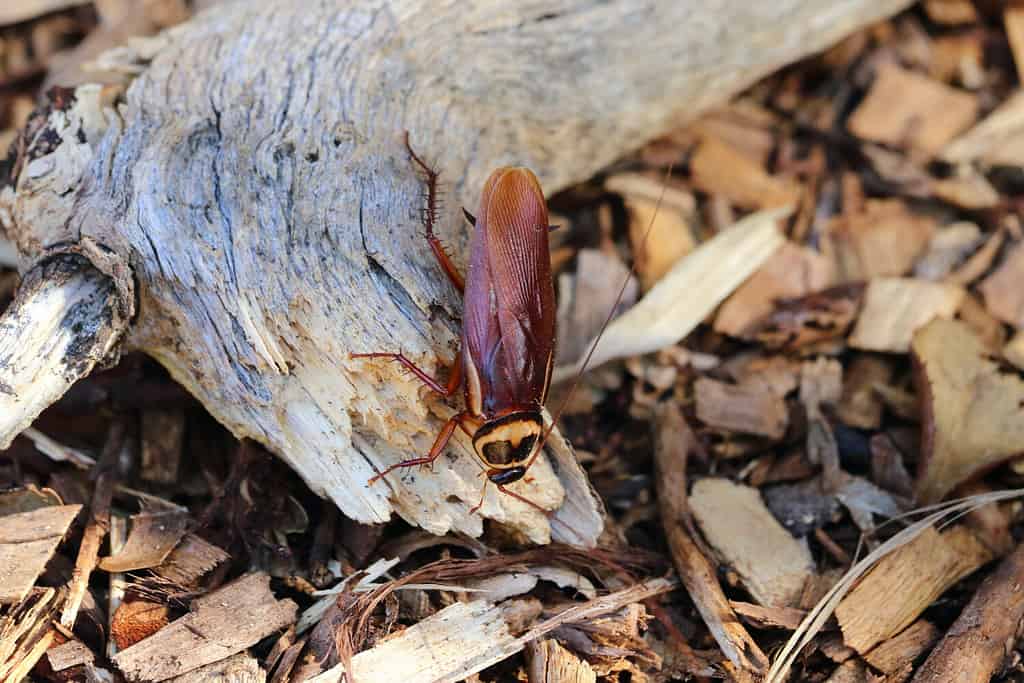
Because of their high tolerance to extreme conditions and ability to reproduce rapidly, cockroaches are highly adaptable.
©Douglas Cliff/Shutterstock.com
Cockroaches possess a range of unique adaptations to survive and thrive in various environments, including residential areas. These adaptations contribute to their success as pests and their ability to withstand human efforts to control their populations.
Tolerance to Extreme Conditions
Cockroaches are known for their incredible ability to withstand extreme conditions. They can survive without food and water for extended periods, allowing them to persist in environments with limited resources.
Additionally, some species can withstand freezing temperatures or extreme heat, further enhancing their resilience.
Rapid Reproduction
Among the primary factors contributing to the success of cockroaches as pests is their rapid reproduction rate.
Female cockroaches can produce numerous offspring in a short period, allowing populations to grow quickly and rebound even after significant control efforts.
This rapid reproduction makes it challenging to control and eliminate infestations.
Highly Developed Sensory Systems
Cockroaches possess highly developed sensory systems that enable them to detect food, water, and potential threats in their environment.
Their antennae are particularly sensitive, allowing them to pick up chemical signals from food sources, pheromones from other cockroaches, and vibrations from nearby movements. Additionally, their compound eyes provide a broad field of vision, helping them navigate and avoid danger.
Prevention and Control Tips
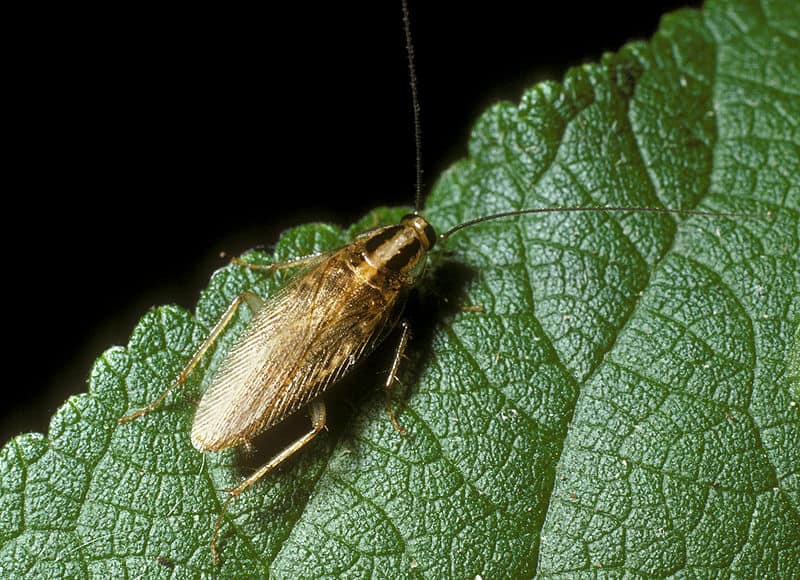
Keeping your home clean and sanitized will go a long way in preventing cockroaches from infesting your home.
©Barry Fitzgerald – Public Domain
Proactively managing and preventing cockroach infestations is crucial for maintaining a healthy and comfortable living environment.
Sanitation
Maintaining a clean and sanitary living environment is among the most effective ways to prevent cockroach infestations.
Cockroaches are attracted to food sources and moisture, so it’s essential to clean up spills and crumbs promptly, store food in airtight containers, and take out your trash regularly. Keeping kitchens and bathrooms clean and dry can also help deter these pests from settling in your home.
Home Maintenance
Regular home maintenance checks can help identify and seal potential cockroach entry points.
Inspect your home for cracks and gaps in walls, windows, doors, and foundations, and seal them using caulk or other appropriate materials.
Additionally, addressing moisture issues by fixing water leaks and ensuring proper ventilation can help create an environment less conducive to cockroach infestations.
Landscape Management
Proper landscape management can help reduce the likelihood of cockroaches finding their way into your home.
Keep vegetation trimmed and away from your home’s exterior to minimize hiding spots for these pests.
Store firewood and yard debris away from your home, as these, can provide ideal habitats for cockroaches and other pests.
Professional Pest Control
Professional pest control services may sometimes be necessary to manage and prevent cockroach infestations effectively.
Regular inspections and treatments by a licensed pest control professional can help identify and address any existing infestations. Moreover, it can provide ongoing protection against future invasions.
Key Takeaways
The cockroach season in Georgia, extending from late spring to early fall poses challenges for homeowners and residents due to the increased risk of infestations.
By familiarizing themselves with the common cockroach species found in the region and understanding the factors that influence their activity, residents can better anticipate and address potential infestations.
Implementing prevention and control measures, such as maintaining proper sanitation, conducting regular home maintenance, managing the landscape, and seeking professional pest control services when needed, can help protect homes and health from these persistent pests.
Vigilance and proactive action against cockroach infestations are essential for ensuring a safe and comfortable living environment.
The photo featured at the top of this post is ©
Thank you for reading! Have some feedback for us? Contact the AZ Animals editorial team.




